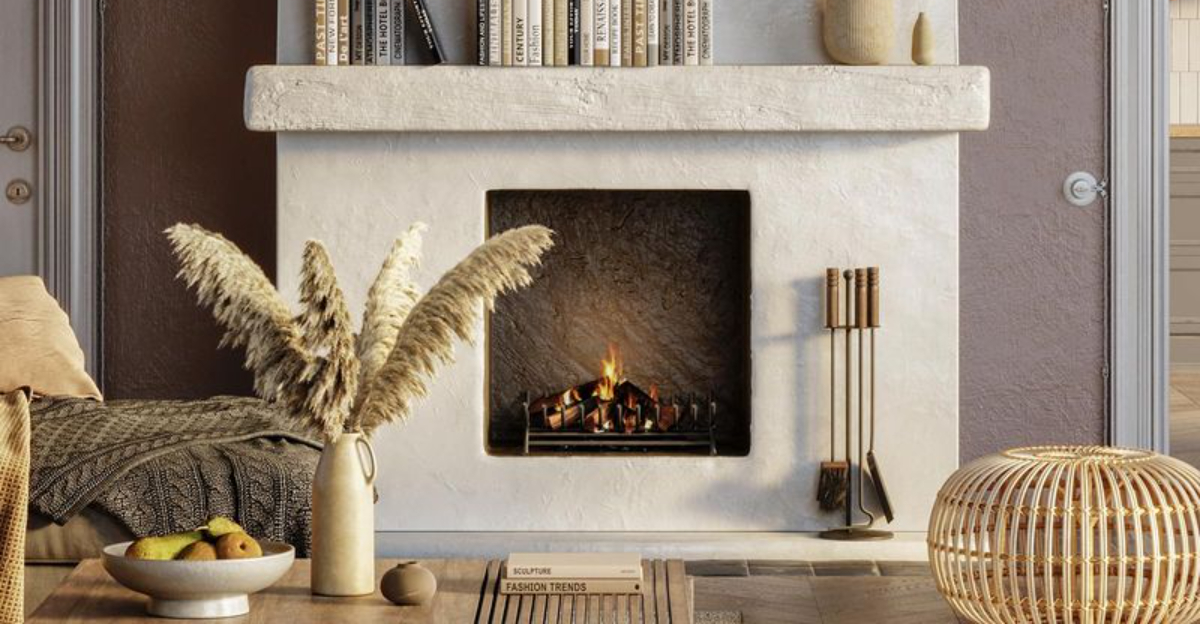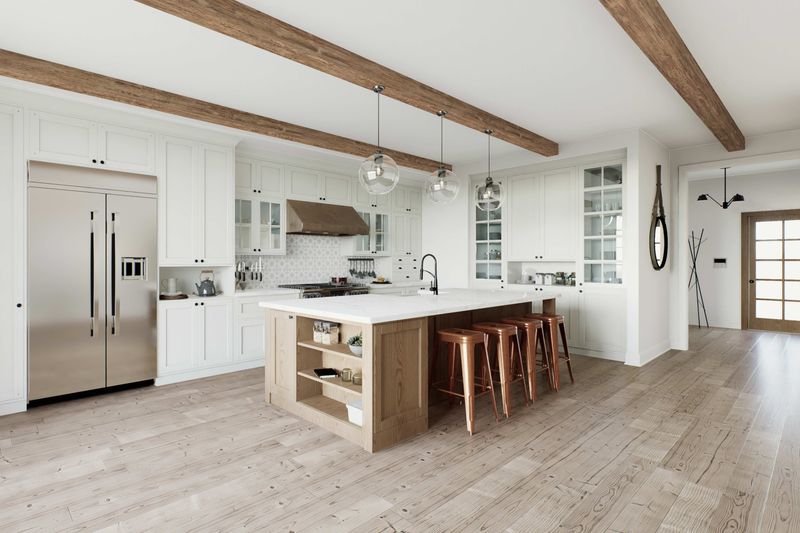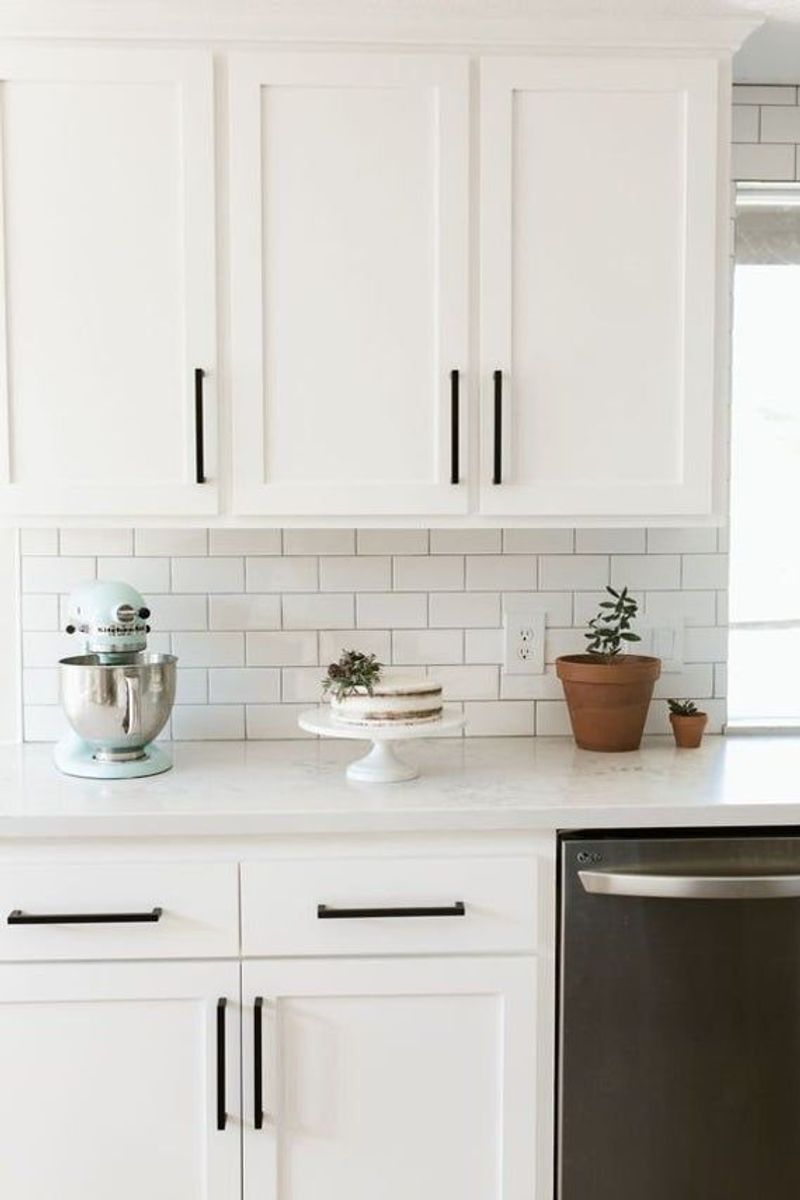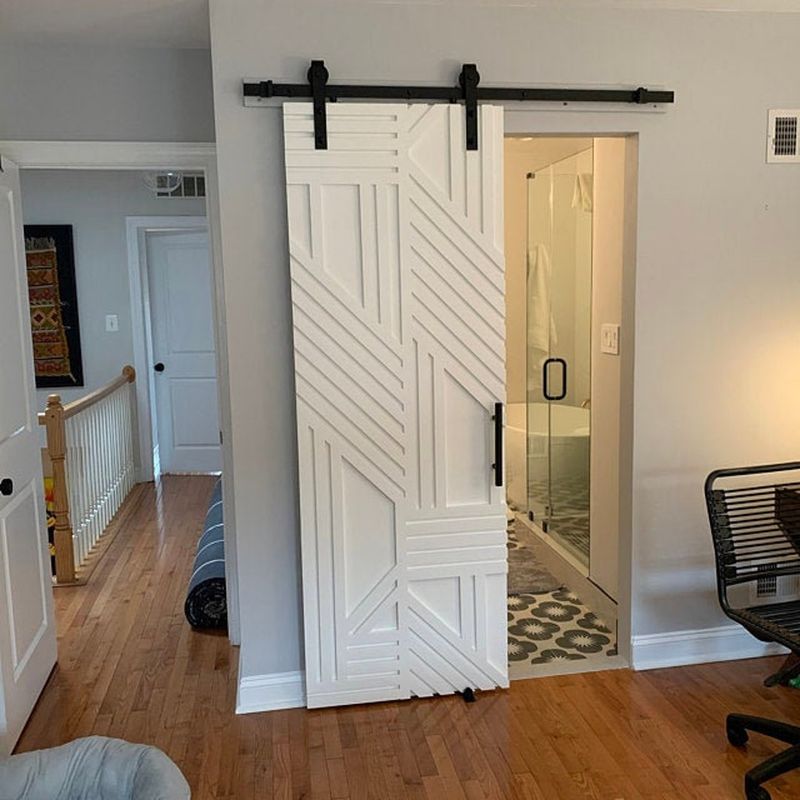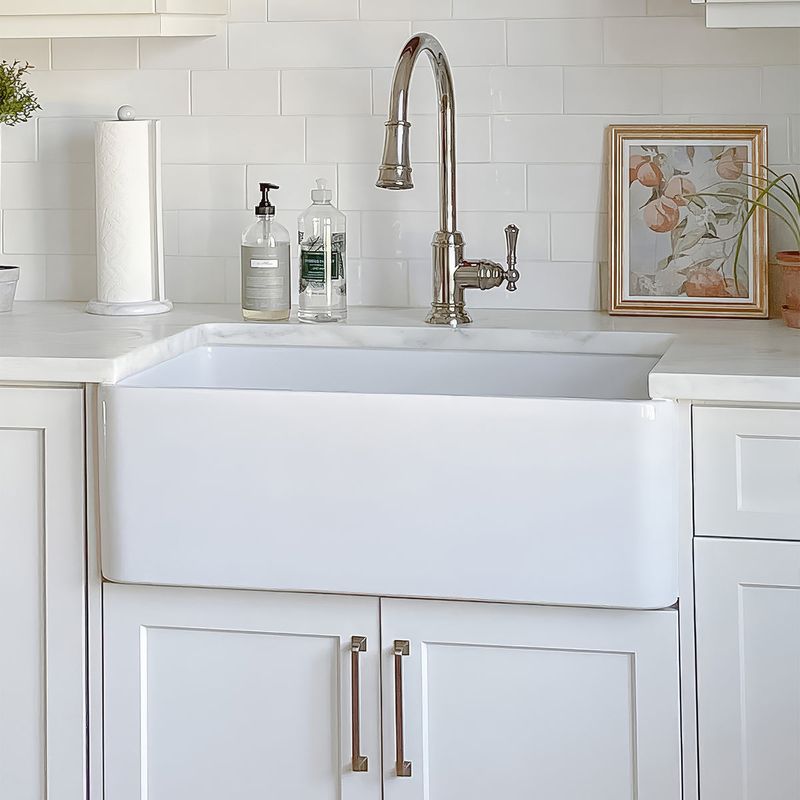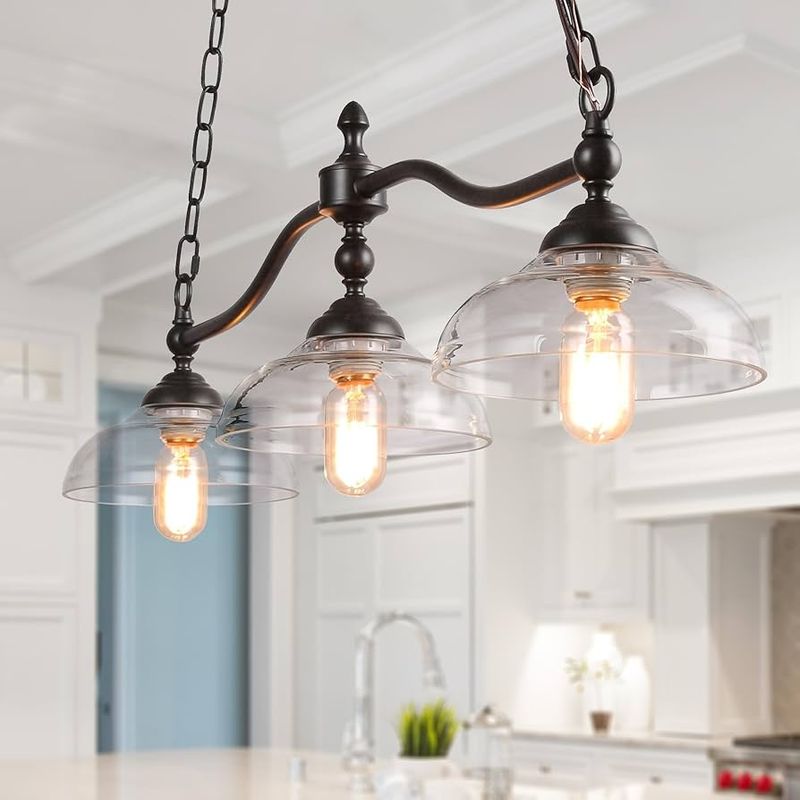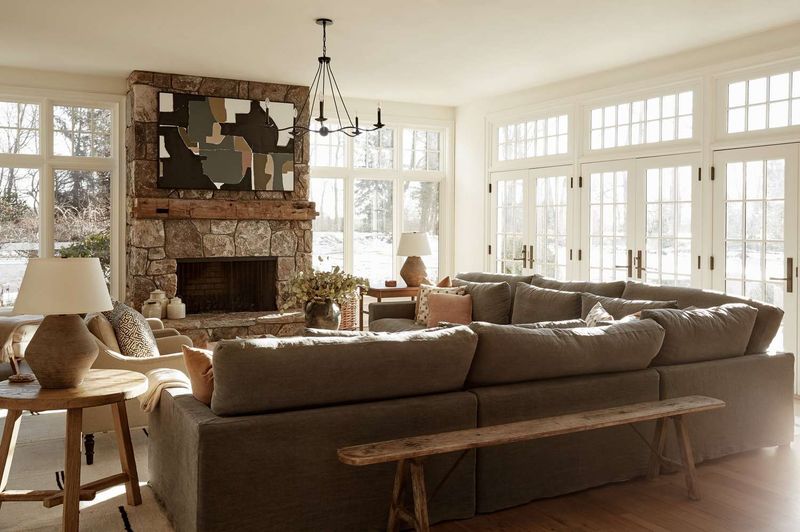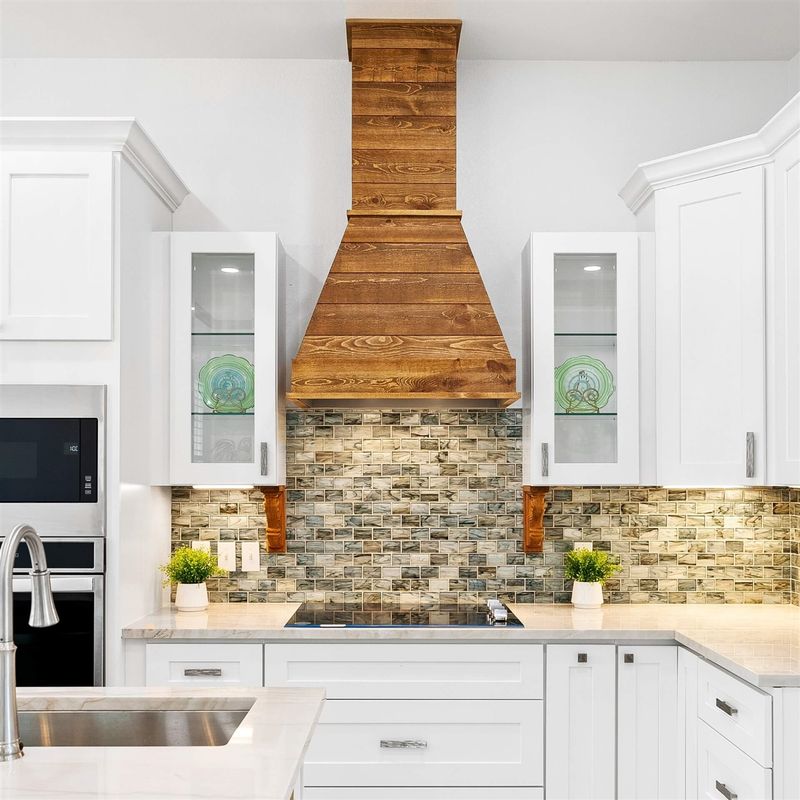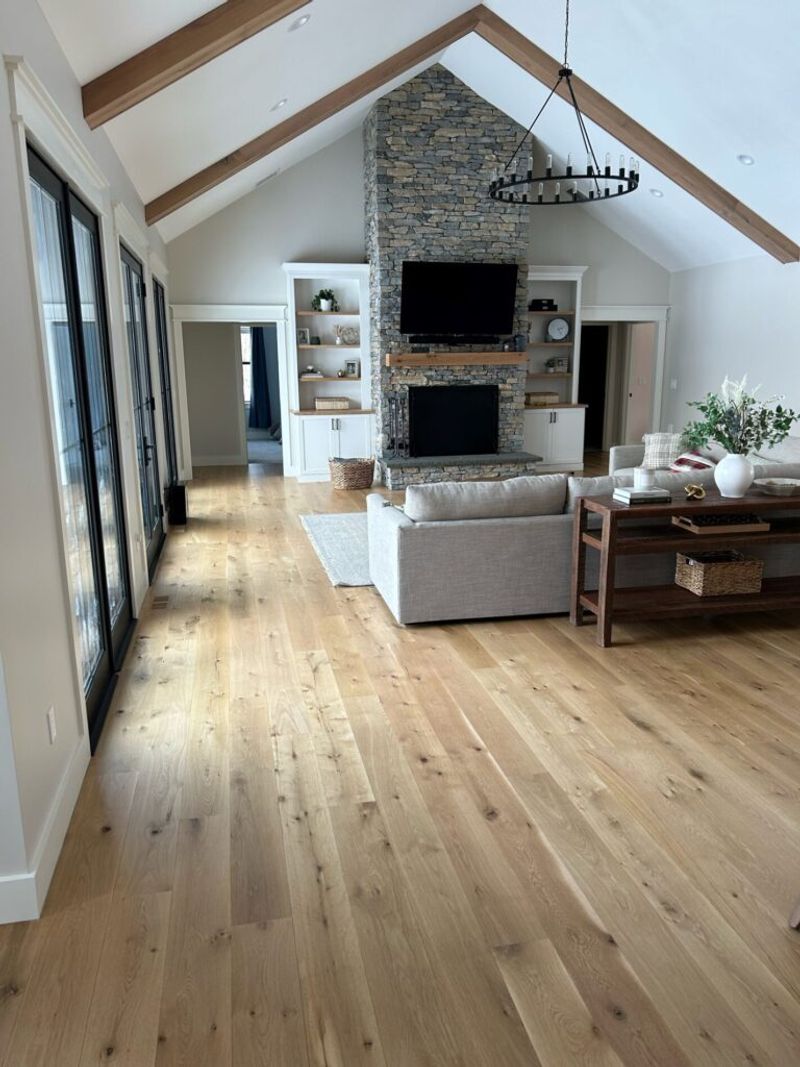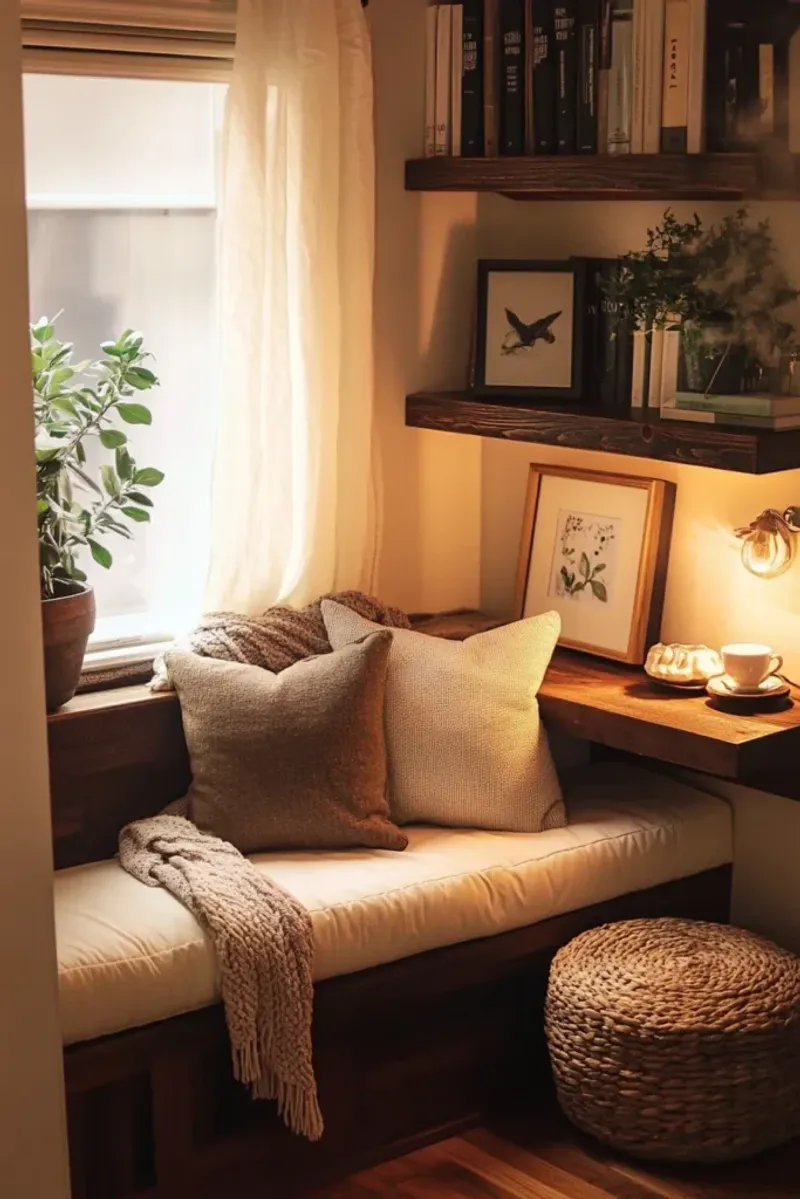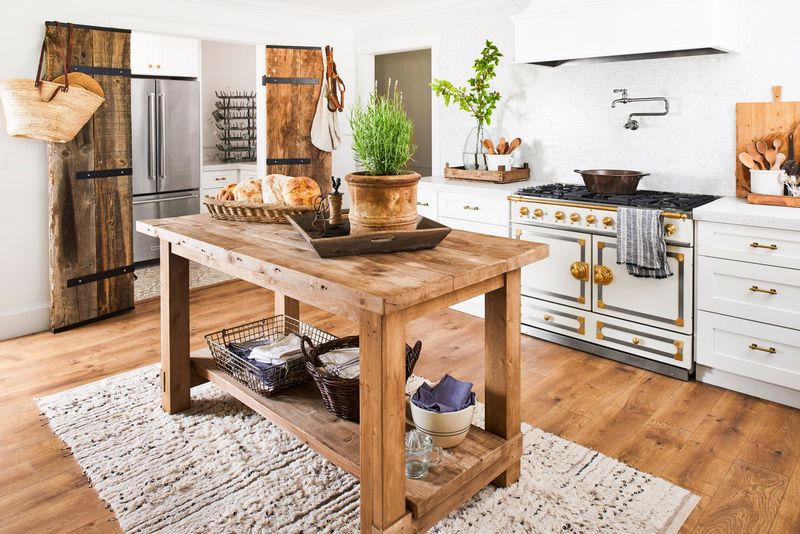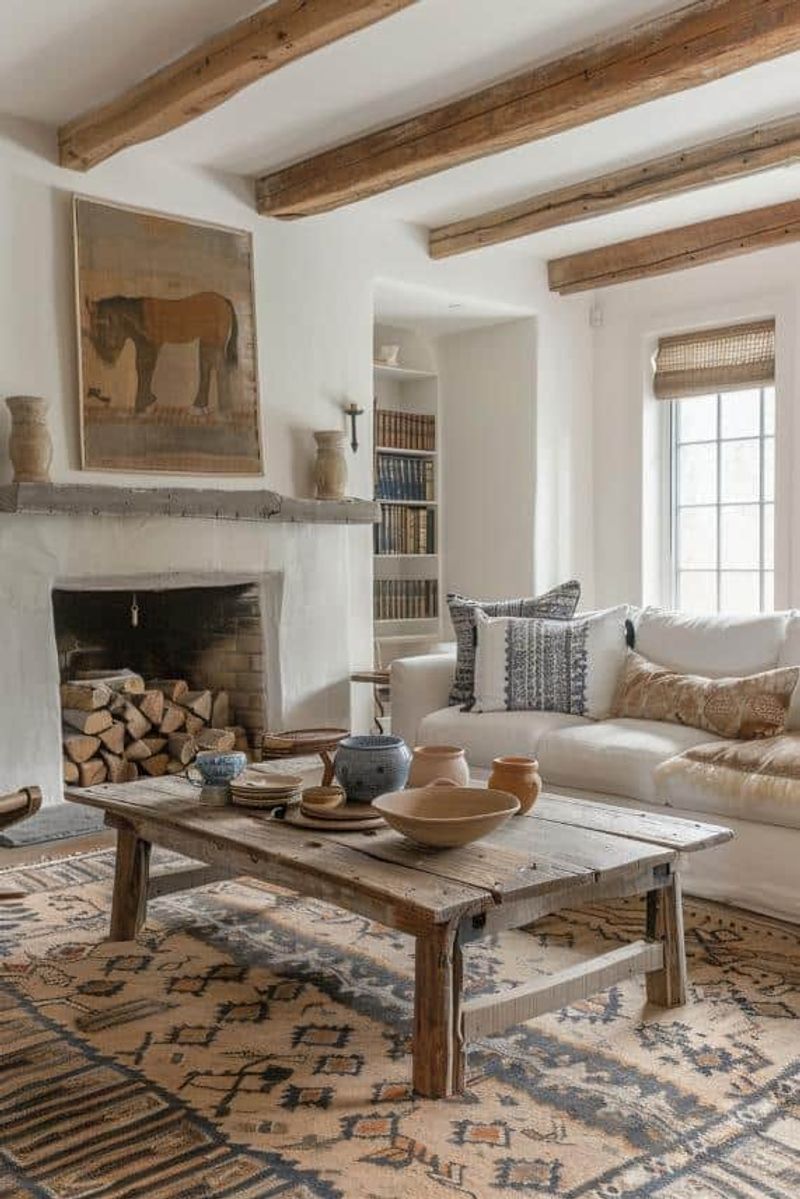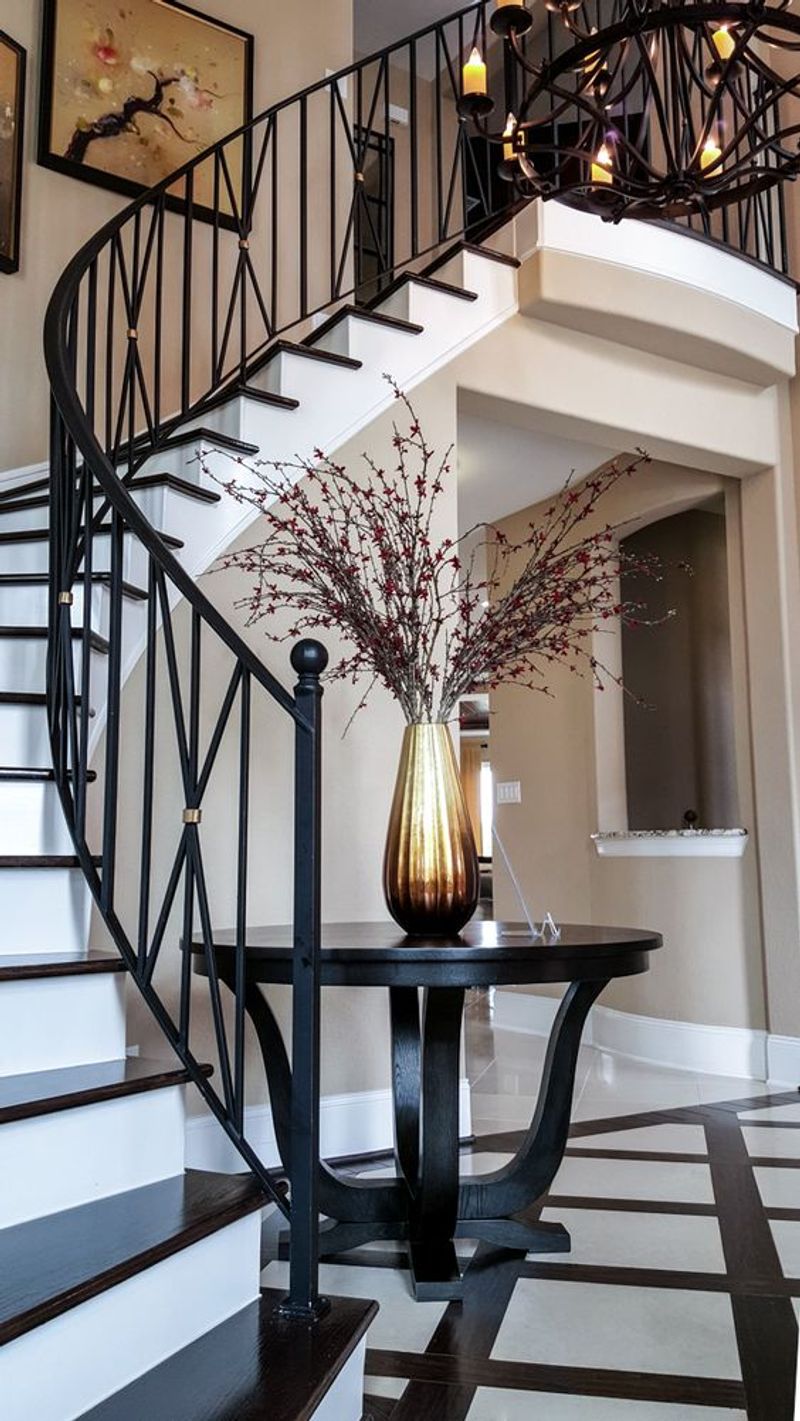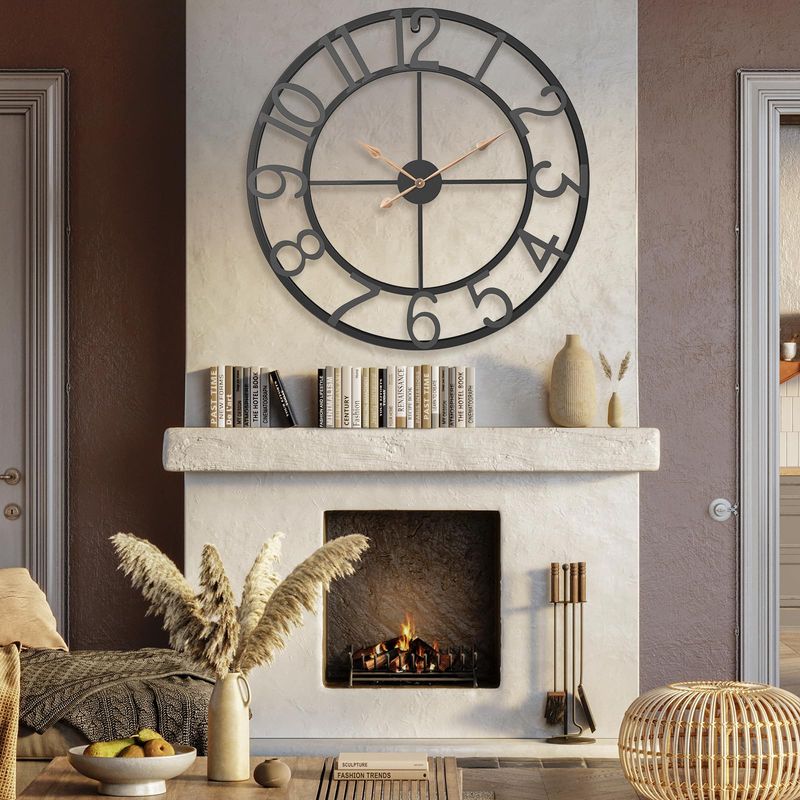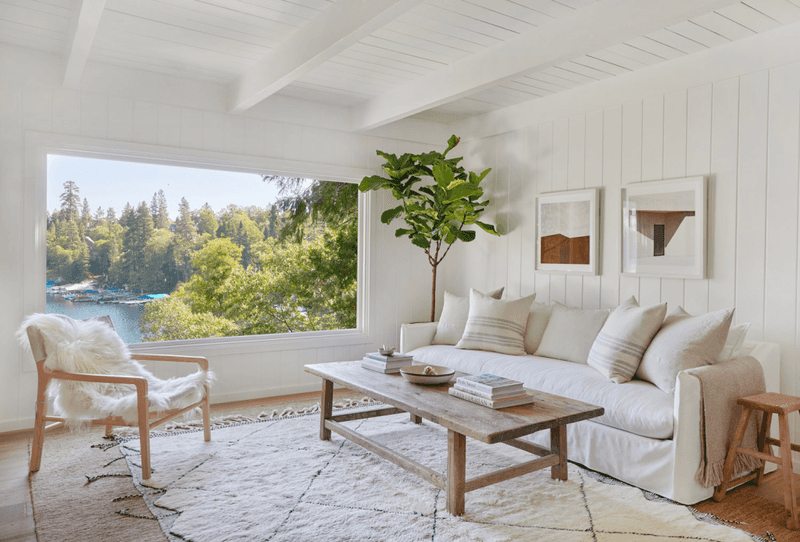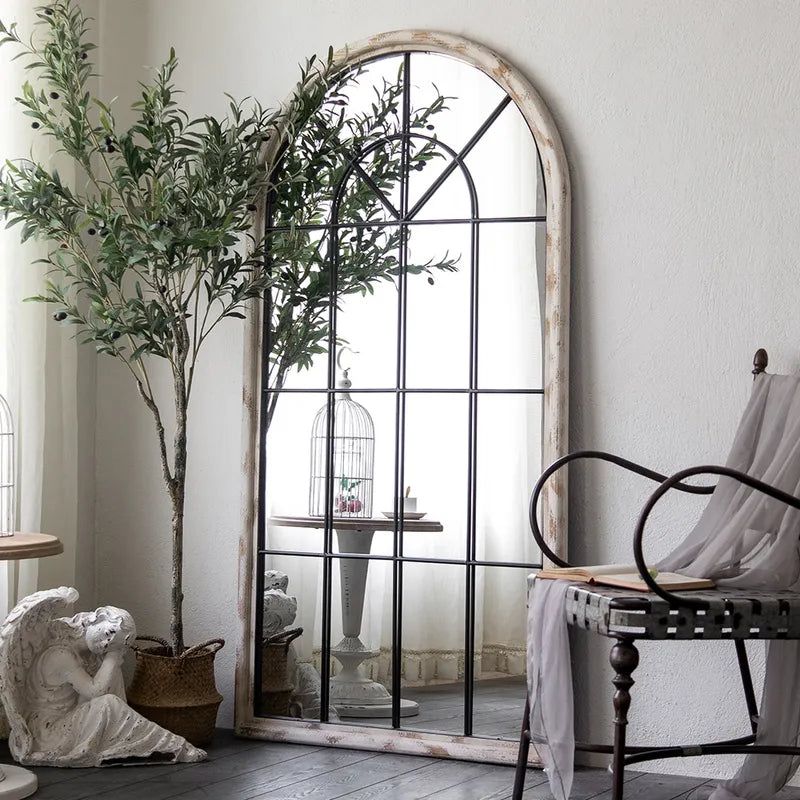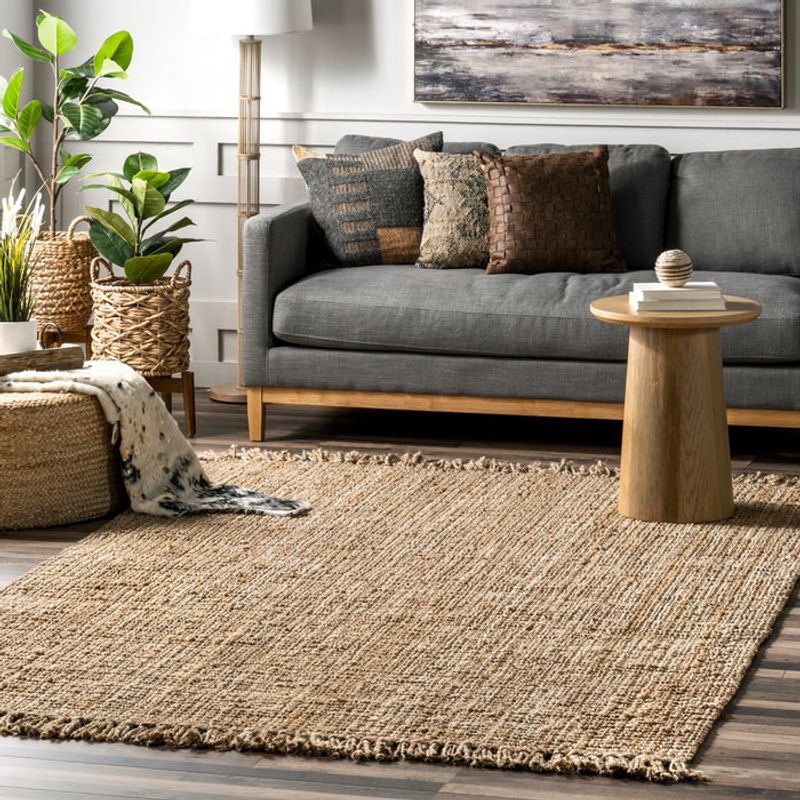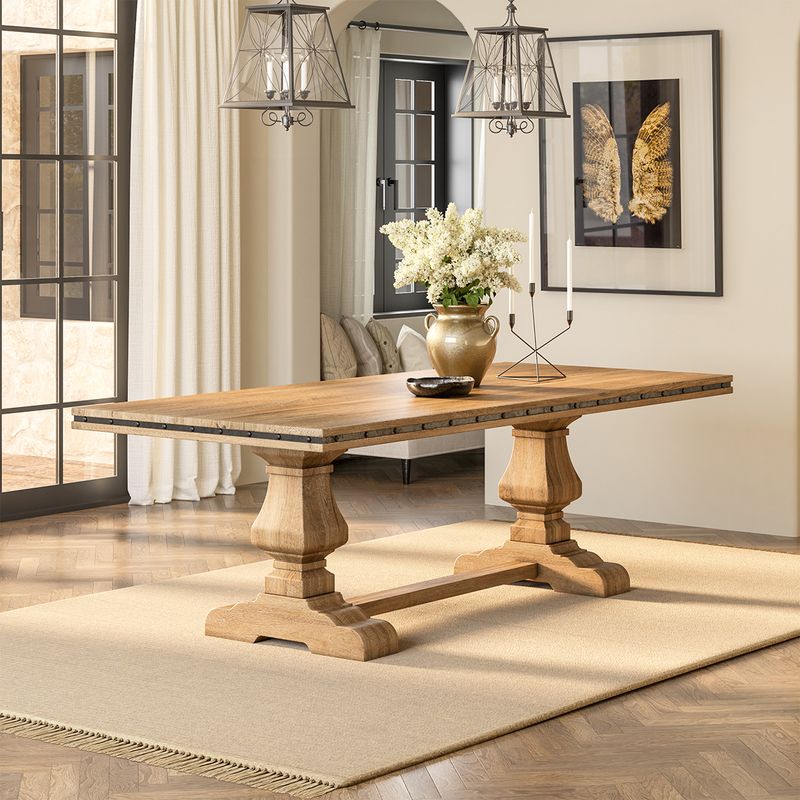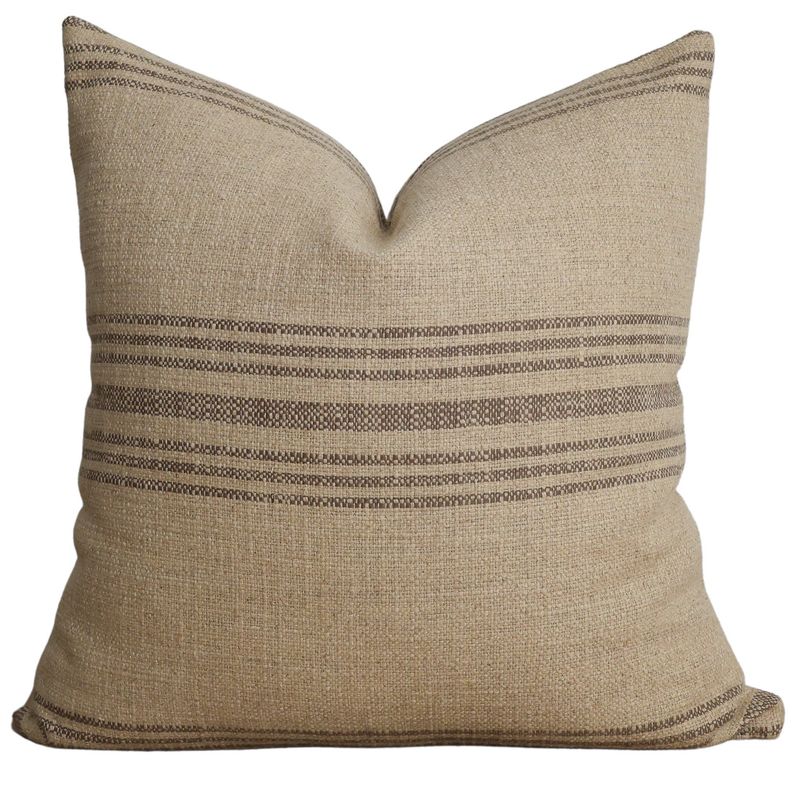Modern farmhouse design isn’t about copying a formula but about capturing a feeling. The right combination of warmth, texture, and just a hint of modern edge can turn a simple space into something that feels grounded and inviting.
These ideas go beyond surface-level trends and tap into the deeper character of farmhouse living. Think thoughtful details, natural materials, and moments that feel effortless but intentional.
If you’re after a home that balances comfort with clean lines, this is the kind of inspiration that gets you there.
1. Reclaimed Wood Beams
Salvaged from old barns and historic buildings, these architectural elements bring authentic character that simply can’t be manufactured. When installed across ceilings, reclaimed beams create visual interest overhead and ground expansive spaces.
The rich patina and natural imperfections tell a story of history and craftsmanship. For smaller rooms, consider a single statement beam above a kitchen island or as a rustic mantel above your fireplace.
2. Matte Black Hardware
Against light cabinetry and neutral walls, matte black pulls, knobs, and fixtures make a striking statement. This high-contrast approach is a hallmark of modern farmhouse style that instantly elevates ordinary elements.
What’s remarkable is how this simple swap can transform dated spaces without major renovation. From cabinet handles to doorknobs, these small details create a cohesive look throughout your home while adding just the right amount of contemporary edge.
3. Sliding Barn Doors
Far from just a practical space-saver, barn doors serve as movable artwork in the modern farmhouse. The hardware itself becomes a design element with its industrial appeal and tactile quality.
Unlike standard doors that disappear into walls, these statement pieces remain visible at all times. Choose reclaimed wood for rustic authenticity or painted versions for a more refined take. Either way, the distinctive track system adds architectural interest to otherwise plain walls.
4. Vintage-Style Sinks
Remember those deep, sturdy farmhouse sinks from grandma’s kitchen? They’re back and better than ever. The generous single basin design accommodates everything from large pots to flower arranging with ease.
White fireclay remains the classic choice, but don’t overlook newer options in concrete, copper, or even stainless steel. Paired with a bridge faucet in brass or bronze, these workhorses become the centerpiece of a hardworking yet beautiful kitchen.
5. Industrial Pendant Lighting
When rustic meets industrial, magic happens in your lighting choices. Metal pendants with exposed bulbs or cage designs introduce an authentic workshop vibe that complements farmhouse elements perfectly.
Hanging these fixtures lower than standard height creates intimacy over dining tables or kitchen islands. Group them in odd numbers for visual interest, and don’t be afraid to go oversized – in farmhouse style, lighting makes a statement rather than blending into the background.
6. Open Shelving Displays
Kiss those closed upper cabinets goodbye! Open shelving breaks up wall space while showcasing collected treasures and everyday essentials. The key to success lies in curated displays that balance function with beauty.
Mixing white pottery, wooden cutting boards, and vintage finds creates depth and interest. For a truly authentic farmhouse look, embrace imperfection – slightly mismatched collections feel gathered over time rather than purchased all at once.
7. Neutral Color Palettes
At the heart of modern farmhouse style lies a soothing palette that lets architectural details shine. Warm whites, soft greiges, and muted earth tones create a timeless backdrop for both contemporary and vintage elements.
The magic happens in the layering – think creamy walls with slightly darker trim, linen upholstery against weathered wood, and touches of black for grounding contrast.
8. Farmhouse-Style Range Hoods
Gone are the days of hiding your ventilation behind cabinetry! Statement range hoods have become the crown jewel of farmhouse kitchens, offering both function and striking style.
Custom wooden enclosures painted to match cabinetry offer a built-in look, while metal versions in zinc or copper develop beautiful patinas over time. The substantial proportions of these architectural elements naturally draw the eye upward, creating a focal point that anchors the cooking zone.
9. Wide Plank Flooring
Forget narrow strips – farmhouse style demands generous planks underfoot! Boards measuring 5 inches or wider instantly give spaces an established, substantial feel that narrower flooring simply can’t match.
Natural oak remains the gold standard with its versatile honey tones and prominent grain patterns. For authentic character, look for options with knots and mineral streaks rather than perfectly uniform boards. Hand-scraped or wire-brushed finishes add tactile dimension while hiding inevitable wear and tear.
10. Cozy Reading Nooks
Every farmhouse needs a special spot for unwinding with a good book. Creating a dedicated reading corner transforms overlooked spaces like window seats, stair landings, or awkward alcoves into purposeful retreats.
Layer in natural textures – think linen cushions, wool throws, and woven baskets – to enhance the comfort factor. A wall-mounted sconce provides task lighting without taking up precious space. The beauty of these nooks lies in their simplicity – they need only be large enough for one person to escape everyday hustle.
11. Rustic Kitchen Islands
Unlike built-in cabinetry, freestanding islands with furniture-like details bring warmth and character to utilitarian kitchens. Look for pieces with turned legs, open shelving, or butcher block tops that contrast with surrounding countertops.
Many homeowners are repurposing antique workbenches, console tables, or even old dressers for truly one-of-a-kind islands. The slightly imperfect nature of these pieces softens the hard edges of kitchens while providing additional workspace and storage. For maximum flexibility, consider versions with casters.
12. Distressed Furniture Pieces
Perfectly imperfect is the name of the game when selecting furniture for modern farmhouse spaces. Pieces with gentle wear, chipped paint, or visible repairs tell stories of lives well-lived and add soul to contemporary interiors.
Mix in just one or two weathered items among newer pieces for balanced design. A vintage dresser repurposed as a bathroom vanity or an antique hutch displaying modern dishware creates compelling tension between old and new.
13. Wrought Iron Fixtures
Hand-forged metal elements introduce raw, authentic texture that balances the softer aspects of farmhouse style. From staircase railings to curtain rods, these substantial pieces add architectural weight and visual interest.
For a truly custom look, seek out local blacksmiths who can create bespoke pieces. Even small touches like iron cabinet latches or door hinges contribute to the collected-over-time aesthetic that defines great farmhouse spaces.
14. Oversized Wall Clocks
Functioning as both timekeeper and statement art, large-scale clocks bring instant character to blank walls. Their substantial presence fills awkward spaces like two-story foyers or above mantels where standard artwork might feel underwhelming.
Look for simple faces with minimal ornamentation – black numerals on white backgrounds offer timeless appeal. Metal frames in aged zinc or distressed wood surrounds complement other farmhouse elements.
15. Linen Slipcovered Sofas
Casual elegance defines the modern farmhouse, and nothing embodies this better than a generously proportioned sofa dressed in natural linen. The relaxed fit of slipcovers signals approachability while offering practical benefits – simply remove and wash when inevitable spills occur.
Opting for performance fabrics in oatmeal, flax, or soft white ensures everyday livability. Deep seats with plush cushions invite lingering conversations and Sunday afternoon naps. For added interest, accent with textural pillows in muted plaids or subtle stripes rather than busy patterns.
16. Antique-Inspired Mirrors
Aged mirror surfaces with subtle spotting and tarnished edges bring instant history to new construction. When framed in weathered wood or distressed metal, these reflective pieces add depth while bouncing light around the room.
Unlike perfectly clear modern mirrors, these character-rich alternatives soften reflections for a more flattering effect. Lean an oversized arch-topped version against a wall for dramatic impact, or group smaller shapes gallery-style. Beyond bathrooms, consider unexpected placements like dining rooms or hallways.
17. Natural Fiber Rugs
Grounding spaces with earthy texture, jute and sisal rugs introduce organic warmth underfoot. Their neutral palette and subtle variation complement both wooden elements and painted surfaces without competing for attention.
The chunky weave and slight irregularities feel authentically handcrafted rather than mass-produced. Layer smaller wool or vintage rugs on top for added comfort and pattern.
18. Statement Farmhouse Tables
As the heart of gathering spaces, a substantial table with character sets the tone for your entire dining area. Look for solid wood construction with planked tops, turned legs, or trestle bases that reference traditional craftsmanship.
Mixing chair styles – perhaps Windsor sides with upholstered host chairs – creates collected appeal. The beauty of farmhouse tables lies in their forgiving nature; every ding and water ring simply adds to their storied patina. Choose versions with expansion leaves to accommodate both intimate family dinners and holiday gatherings.
19. Vintage Grain Sack Textiles
Authentic European grain sacks with their distinctive stripes and faded stenciling bring historical texture to modern spaces. Originally used for transporting agricultural products, these durable linens now enjoy second lives as pillow covers, upholstery, or even framed textile art.
The muted palette of natural linen with blue, red, or black stripes complements farmhouse color schemes perfectly. Their inherent imperfections – small repairs, slight discoloration, or uneven weaving – contribute to the authentic character that mass-produced reproductions simply can’t match.

